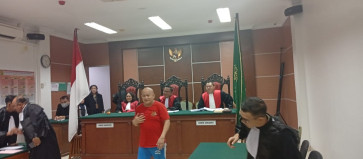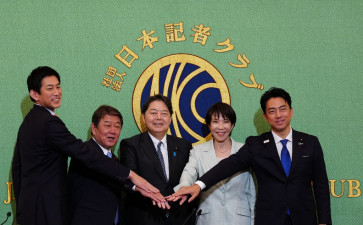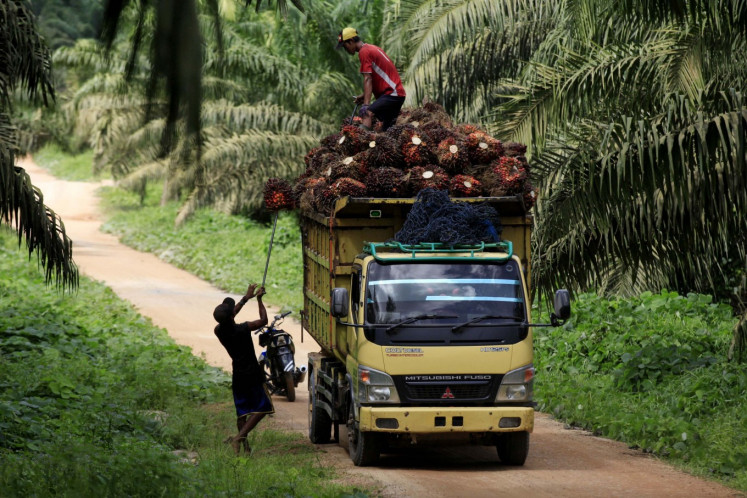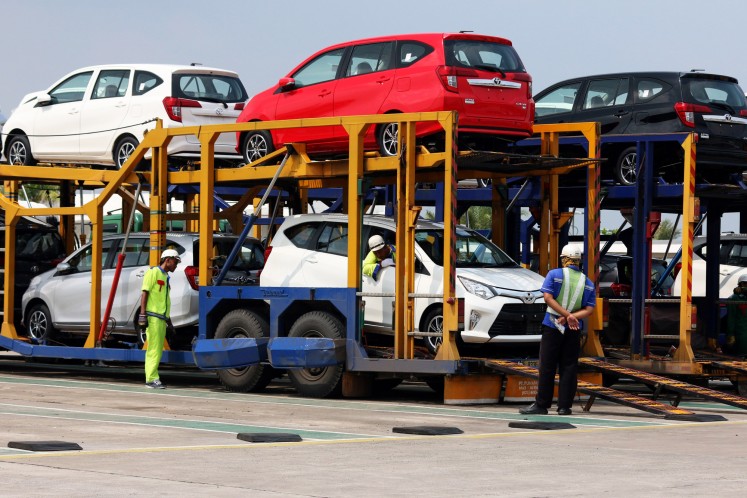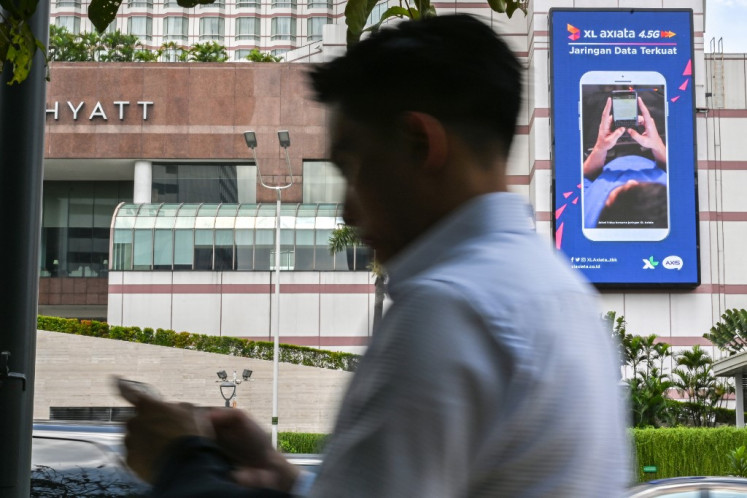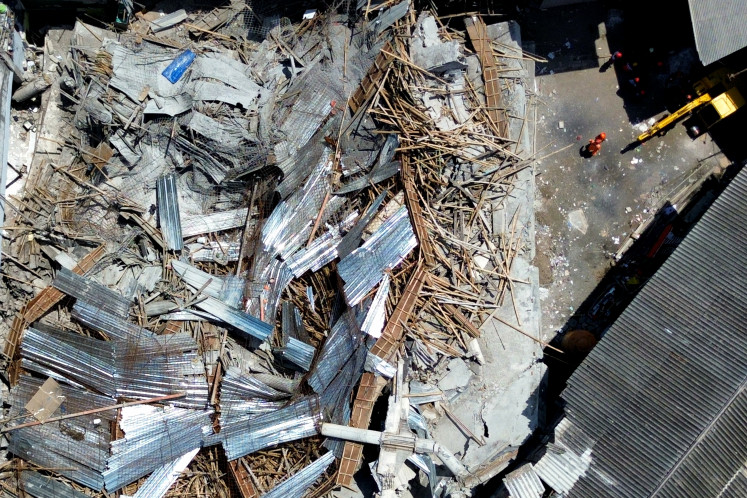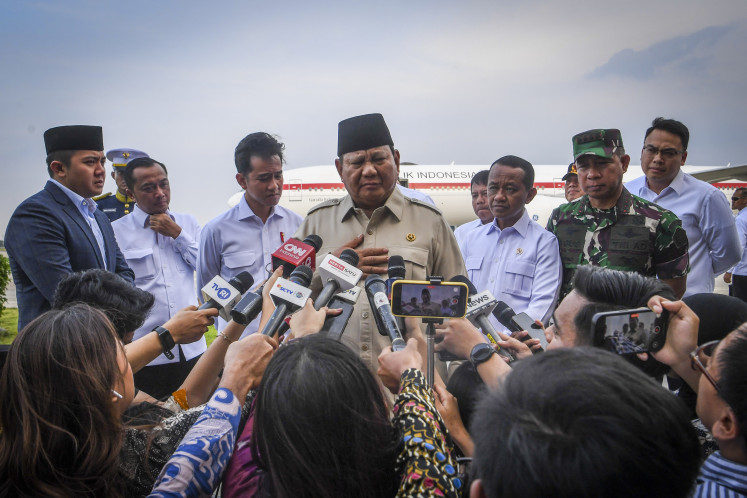Popular Reads
Top Results
Can't find what you're looking for?
View all search resultsPopular Reads
Top Results
Can't find what you're looking for?
View all search resultsMangrove restoration only half the story
Mangroves are under the water as well as above it
Change text size
Gift Premium Articles
to Anyone
M
angroves are under the water as well as above it. Similarly, public knowledge of their importance in climate change can be below people’s line of sight and awareness. This vital coastal ecosystem figures as an area for marine protection, one of six areas of action in the fifth Our Ocean Conference (OCC) that Indonesia is hosting from Oct.29 to 30 in Bali.
Mangroves are tropical trees that grow in tidal, coastal swamps. Their branches spread and send down roots in a dense crisscross tangle. Countries with a large area of mangroves include Indonesia, Brazil, Australia, Nigeria and Mexico. In coastal Southeast Asia, mangroves are also present in Malaysia, Singapore, Thailand, Cambodia, Vietnam, Myanmar and the Philippines, serving as buffers to protect coastlines. However, what the public knows little about is that mangroves help to manage global warming. Releasing carbon into the atmosphere increases global warming. In turn, it would also inflate the occurrence of climate change impacts.
This coastal ecosystem contains a great amount of carbon dioxide. One hectare of mangroves can hold as much as five times the carbon dioxide in 1 hectare of upland forests.
Mangroves are nature’s coastal silo for carbon storage. By keeping the carbon intact, mangroves could help meet the 2015 Paris Agreement’s call to limit global warming to “well below” 2 degrees Celsius by lowering carbon emissions.
Indonesia has the world’s largest expanse of mangroves. The National Development Planning Agency (Bappenas) estimates Indonesia’s mangroves at 3.48 million ha. Most of the mangrove cover, about 1.81 million ha, is degraded, while 1.67 million ha are in good condition.
The problem Indonesia faces is that the country loses as much as 52,000 ha of mangroves annually. Much is cleared for aquaculture, particularly for shrimp and fish ponds. Clearing away mangroves amounts to destroying mangroves. This degrading opens the lid on that carbon silo. The released carbon gathers in the atmosphere and marks up global warming.
The challenge is how to restore the 1.81 million ha of Indonesia’s degraded mangroves. Good mangroves absorb carbon in the atmosphere. One basic approach is the placing of seedlings in polybags. Within three months, four or more leaves sprout and the seedling is ready for planting.
Technically, mangrove restoration is no problem. The knowledge is available. The survival rate of replanted mangroves can be as high as 74 percent if it is done in the right place: between mean sea level and high tide.
The government aims to restore the 1.81 million ha of degraded mangroves by 2045. However, one major obstacle is a non-technical dilemma: land-use disputes. People encroach a nature reserve and convert the mangroves within it for fish ponds. One case is the Tanjung Panjang reserve in Gorontalo province, northern Sulawesi.
However, even if the government and NGOs succeed in rehabilitating the 1.81 million ha of degraded mangroves, it’s only half the story. The other half is conserving the 1.67 million ha of good mangrove forests. How to protect the unspoiled mangroves from damage and prevent illegal conversion is of paramount importance.
Mangroves as well as seagrass meadows and tidal marshes are components of Indonesia’s blue carbon. This is the carbon found in the country’s coastal ecosystem.
The government with Bappenas in a central role intends to put blue carbon into the nation’s development planning agenda, for the 2020-2024 five-year plan.
“If blue carbon can get into the five-year plan, it would enable ministries to secure blue-carbon-related funding more easily,” Indonesia Climate Change Trust Fund (ICCTF) executive director Tonny Wagey told a recent mangroves workshop conducted by World Resources Institute (WRI) Indonesia. The ICCTF is a national climate funding portal under the auspices of Bappenas.
The ICCTF drafted its Indonesia Blue Carbon Strategy Framework, which covers five strategic issues: policy, science, outreach and communication, learning sites and sustainable financing. Meanwhile, the organizers of the Blue Carbon Summit in Jakarta last July put together a blue-carbon development road map on mainstreaming into existing policies to reduce carbon emissions.
Any blue carbon strategy with mangrove conservation and restoration at its core can work well if it is in line with the Paris Agreement to significantly reduce carbon emissions. One workshop participant stressed the strategy framework should tie in with the global interest on climate change.
“There are countries that don’t have mangroves but are willing to be donors for us to maintain our mangroves. We, who own the mangroves, must make a regulation that accommodates the world’s interest. There’s a carbon interest, an interest in climate change mitigation and adaptation,” said Sukristijono Sukardjo, a retired professor of mangrove ecology, mangrove policy adviser and past mangrove researcher at the Food and Agriculture Organization.
__________________
The writer teaches at the Dr. Soetomo Press Institute (LPDS), Jakarta. He edited Covering Climate Change Volume 1 (2013) and Volume 2 (2015), recapping a series of journalism workshops the LPDS undertook from Aceh to Papua starting in 2012 with Norwegian Foreign Ministry funding.


